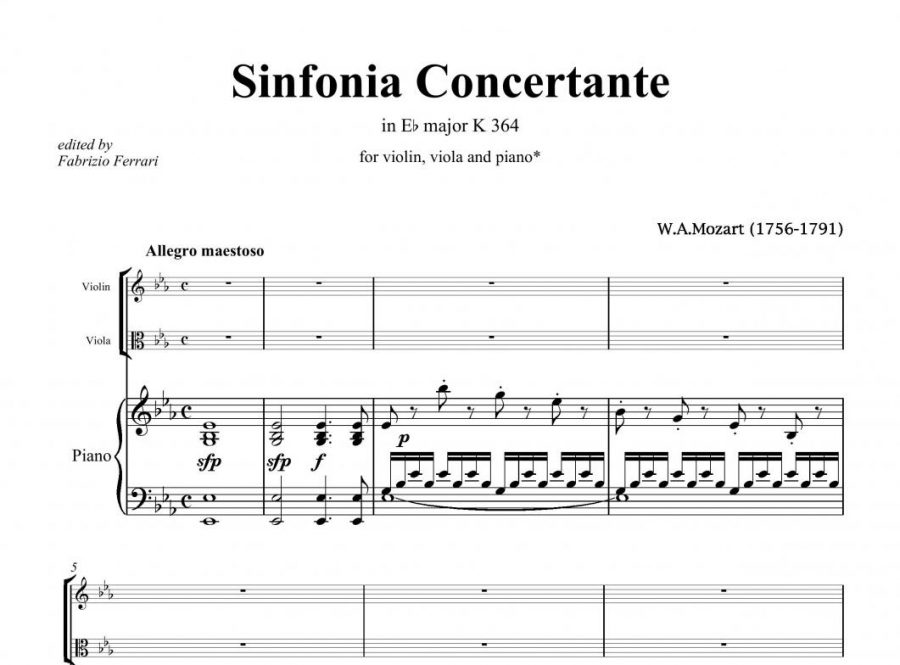Quick Hit with Adeline Harper
“Sinfonia Concertante for Violin, Viola and Orchestra in E-flat Major, K. 364, Presto(III)” by Wolfgang Amadeus Mozart
Transposition for piano and violin of Mozart’s “Sinfonia Concertante for Violin, Viola and Orchestra in E-flat Major, K. 364, Presto(III)”. Mozart’s travels to Munich and Mannheim in 1777 then on to Paris in 1778 inspired him to write the piece in 1779.
August 24, 2021
Welcome to the world of classical music. First stop, “Sinfonia Concertante for Violin, Viola, and Orchestra E-flat Major” written by Mozart in 1779.
The classical genre of sinfonia concertante is typically composed with three movements and one or more solo instruments.
This sinfonia concertante was written for two oboes, two horns, strings, and a solo violin and solo viola. One aspect of this sinfonia that stands out from the rest can be found within the string section. A divided viola section which accounts for the piece’s diverse and deep harmony.
For this piece, the viola is finely tuned a semitone sharper, and the part is written in D major instead of E flat major to give the work a brilliant tone.
In the beginning of the third movement, Presto, the orchestra takes the lead with a lovely melody, foreshadowing what the two soloists will play.
The first introduction to the soloists takes place about a minute in. With the orchestra providing harmony, the solo violin leads the piece with a thrilling entrance. Echoing the violin, the solo viola calls back.
Playing together in harmony and melody, the two soloists sweep the stage with fast trills, sixteenth notes, scales, arpeggios, and lush melodies.
Nearing the middle of the piece, the soloists stop and let the orchestra carry the melody. A tiny pause from the orchestra and the viola takes the lead again. This time, the melody from the violin in the beginning is stated again from the viola part.
Continuing on, Mozart throws bits and pieces of key changes, accidentals, and hints at the original melody in piece, along with small breaks for the soloists.
In the build-up of the piece, the solo violin and viola take turns playing a goosebump, hair-raising arpeggio that leads into the entire orchestra ending in a huge finale that would surely lead to an outstanding applause.
Mozart only lived to 35, but that was plenty of time for him to write 600 different works. Some of his most famous pieces include “Lacrimosa – Requiem in D Minor” (1791), “Symphony No. 40 in G Minor, K. 550” (1788), and “Serenade No. 13 in G Major, K 525” (1781).
Even if you are not a classical enthusiast, Mozart can become a go-to composer for many different moods. Go check out Wolfgang Amadeus Mozart and his sinfonias on YouTube or your favorite music app.





